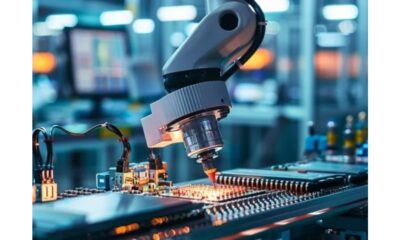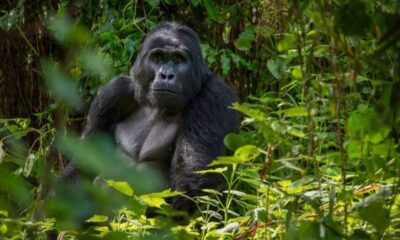Tech
From Soil to Silicon: The Rise of Agriculture AI and Drone Innovations in 2025
In 2025, agriculture is entering a new era—one where the age-old connection between farmers and soil converges with cutting-edge AI and drone technologies. This transformation, dubbed “from soil to silicon,” is reshaping how crops are grown, protected, and managed, delivering higher yields, lowered costs, and a more sustainable future for farming.
1. Precision Farming: Data-Driven Cultivation
Gone are the days when farmers relied solely on soil tests or satellite images. Today’s AI-powered drones and machines map soil properties—like moisture, nutrient density, and pH—at centimeter-level resolution. These insights allow variable-rate irrigation and fertilization, optimizing inputs based on real-time data—cutting water and chemical use, while improving yields by roughly 20%. Institutions like Syngenta Group and the World Economic Forum (WEF) have emphasized this
shift. Syngenta CEO Jeff Rowe highlighted five core AI trends defining agri-tech in 2025— especially AI-driven soil analysis and advisory tools that operate within farmers’ hands.
2. Drones: The Eyes & Tools of the Field
Drones are at the forefront of the soil-to-silicon leap:
- Survey & Monitoring: Multispectral and thermal cameras onboard drones detect early signs of pest infestations, nutrient deficiencies, or water stress—often before human observation is possible. This enables on-demand treatment and improves resource management.
- AI-Powered Spraying: High-capacity models like DJI Agras T50—armed with onboard AI and radar—discern weeds from crops and spray only when necessary. Early adopters in Brazil saw costs drop 70% compared to manual spraying, while Romania’s vineyards halved chemical usage on steep slopes.
- Farmers’ ROI Gains: Commercial reports suggest that precision spraying can increase productivity by 20% and reduce overall input costs—yielding both economic benefits for farmers and environmental gains via reduced runoff.
- Livestock Management: In Australia, platforms like SkyKelpie deploy drones for livestock mustering—herding cattle, reducing the need for helicopters or motorbikes. With AI enhancements, some operations achieve over 250% ROI, showcasing drones’ versatility beyond crop fields.
In 2025, agriculture stands at the frontier of transformation. From soil to silicon, AI and drone technologies are ushering in smarter, more sustainable farming. As these tools weave together— mapping soil health, monitoring crops mid-season, spraying with surgical precision, and even herding livestock—the farm of tomorrow is taking shape.
To realize the full promise of this revolution, stakeholders—from farmers and startups to policymakers—must continue working together. That means improving access, harmonizing regulations, supporting training platforms, and safeguarding data. With strategic action, the rise of
Agriculture AI and drone innovations won’t just be a technological marvel—it will become a cornerstone of food security, rural development, and planetary stewardship.
Dr. Vijay Bhardwaj
Professor
Chandigarh University
-

 Lifestyle4 weeks ago
Lifestyle4 weeks agoBob Gerace Discusses Coaching Themes: Confession, Reconciliation, Communication, Intimacy, and Fatherhood
-

 Education3 weeks ago
Education3 weeks agoAn Exclusive Interview With Holly Gold: The Heart and Vision Behind The Little Schools
-

 Travel4 weeks ago
Travel4 weeks ago8000 Voices, One Vibe — Ludhiana Sang Every Word with Talwiinder at Bangr Arena
-

 Business3 weeks ago
Business3 weeks agoCorporate Event Catering in Manchester: What Businesses Need to Know (and why Manchester sets the bar)
-
Tech4 weeks ago
Harrington Quality Management System (HQMS): Flagship Platform of Harrington Group International
-

 Business3 weeks ago
Business3 weeks agoCorporate Christmas Gifting Makes a Big Comeback
-

 Apps3 weeks ago
Apps3 weeks agoCanva Launches AI-Powered Design Model and New Creative Features
-

 Travel3 weeks ago
Travel3 weeks agoExploring Europe’s Most Photogenic Cities for Your Next Trip






















